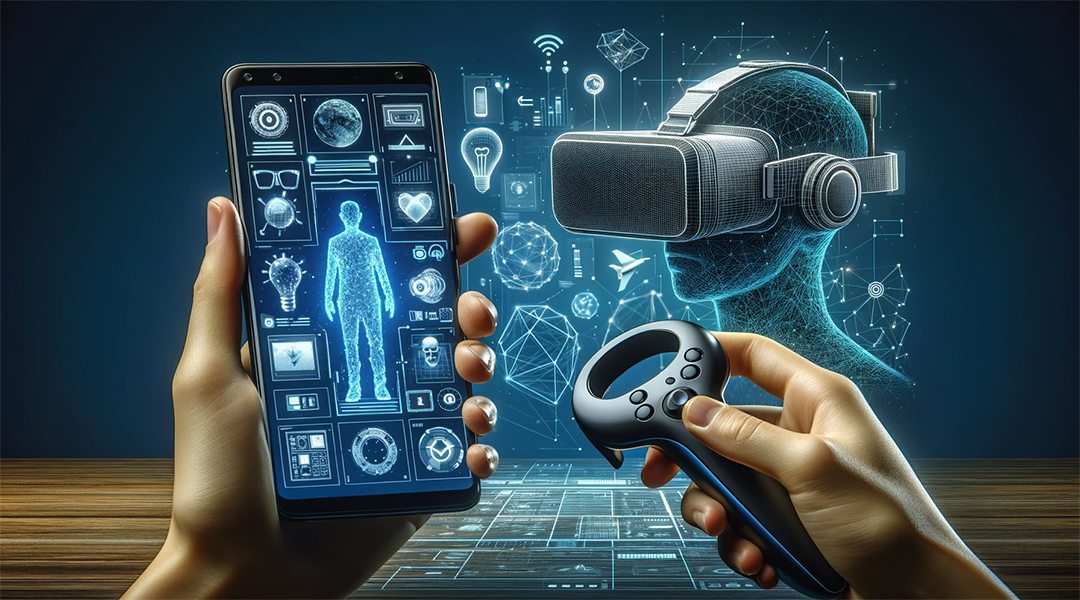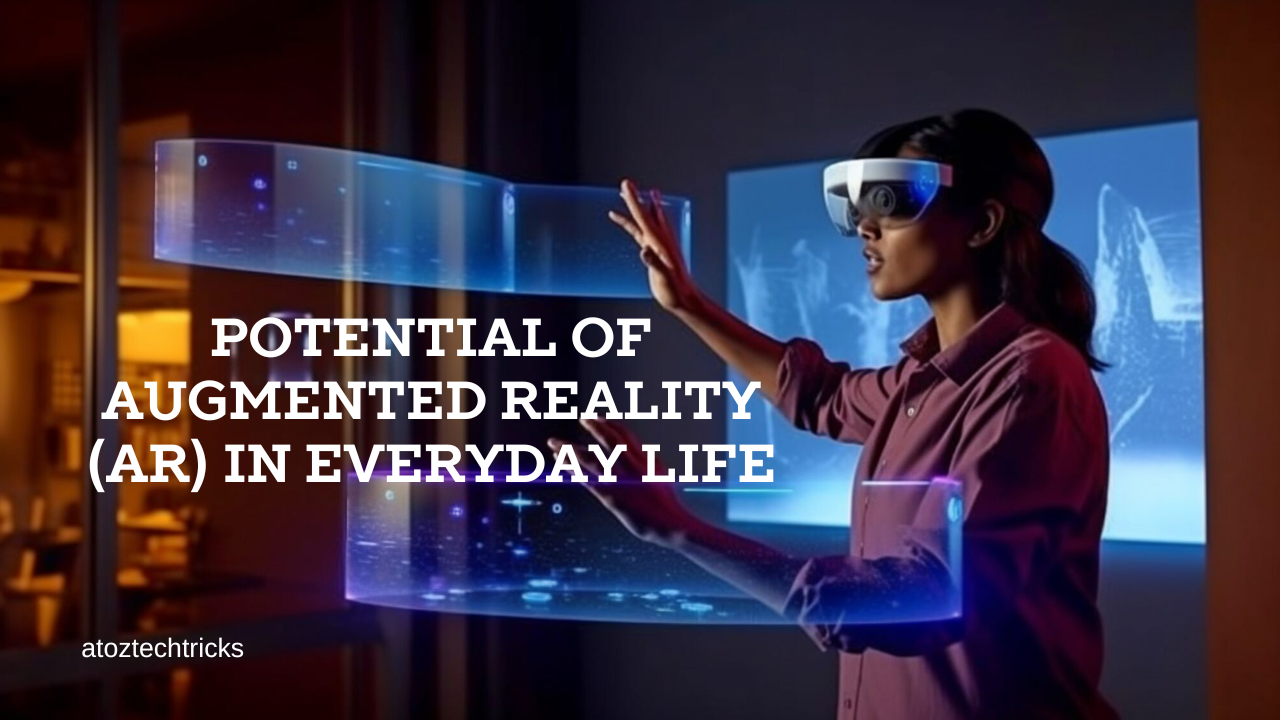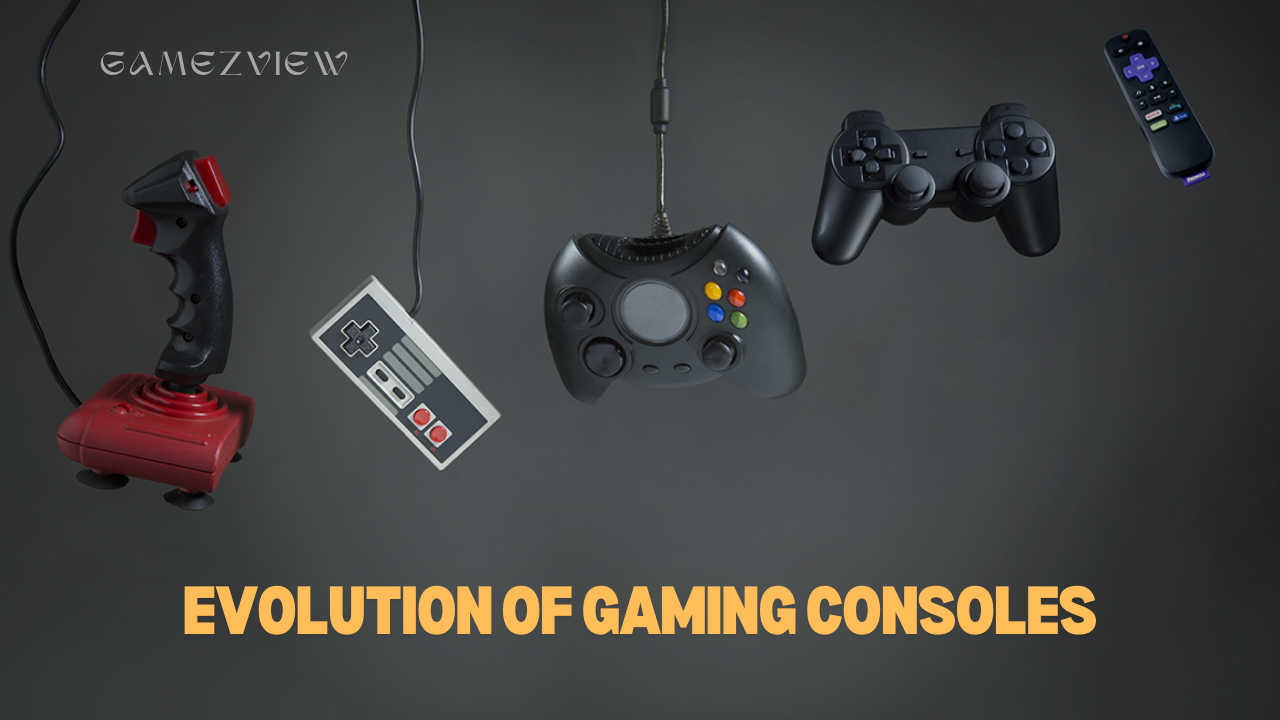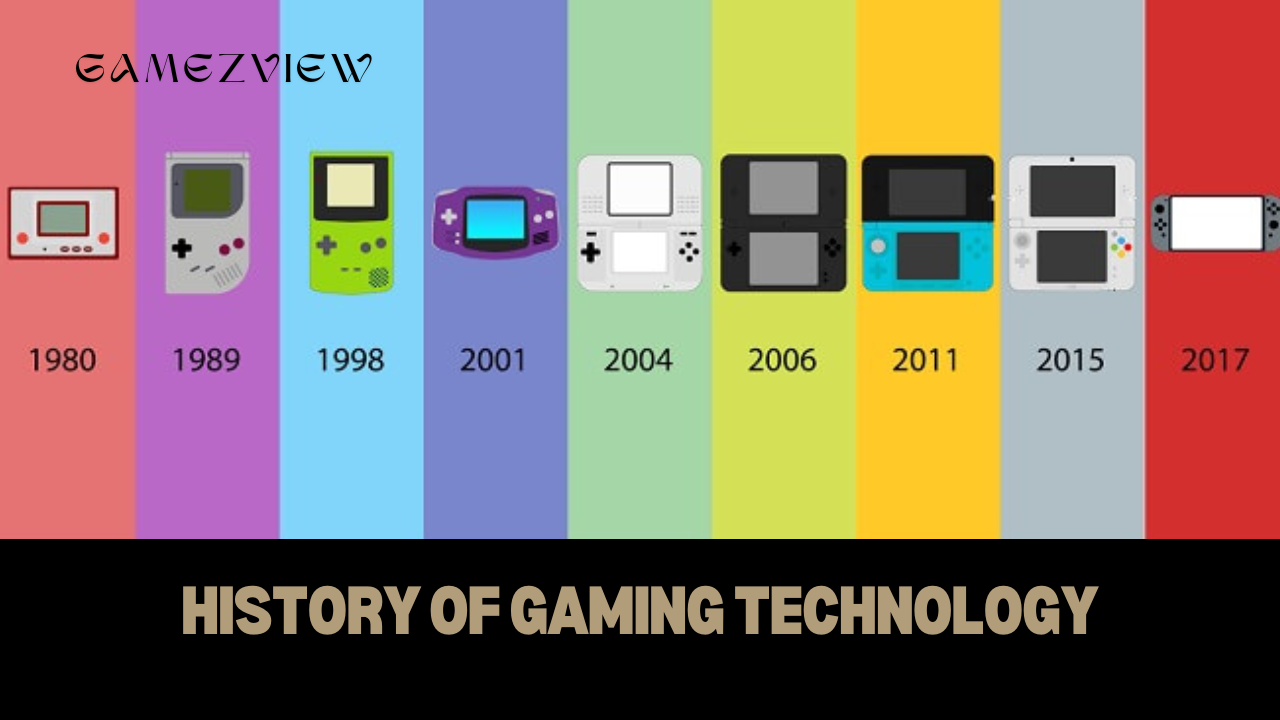Augmented Reality (AR) is a technology that overlays digital information onto the real world, enhancing our perception of reality. Unlike Virtual Reality (VR), which creates entirely immersive virtual environments, AR integrates digital elements with the physical world, offering a blend of both. This transformative technology has the potential to revolutionize numerous aspects of everyday life, from how we interact with our environment to how we work and play. This article explores the potential of AR across various domains, delving into its applications, benefits, and prospects.
1. AR in Everyday Activities
1.1 Enhancing Daily Tasks
One of the most practical applications of AR is in enhancing everyday tasks. For instance, AR can provide real-time navigation aids, overlaying directions directly onto a user’s field of view through smart glasses or mobile devices. This can simplify finding locations and improve situational awareness, particularly in unfamiliar environments.
Cooking is another area where AR can make a significant impact. With AR-enabled kitchen devices or apps, users can receive step-by-step cooking instructions overlaid on their kitchen counters. These instructions can adapt in real-time based on the ingredients available, helping users follow recipes more accurately and efficiently.
1.2 Shopping and Retail
AR is transforming the shopping experience by bridging the gap between online and in-store shopping. Virtual fitting rooms allow customers to try on clothes or accessories virtually, reducing the need for physical try-ons and minimizing the time spent in stores. For instance, AR apps enable users to see how different items of clothing or makeup products look on them before making a purchase.
In retail environments, AR can enhance the shopping experience by providing additional product information, reviews, and interactive features. Shoppers can point their smartphones at products to see detailed descriptions, ratings, and recommendations, helping them make more informed purchasing decisions.

2. AR in Education and Learning
2.1 Interactive Learning Experiences
AR has the potential to transform education by creating interactive and immersive learning experiences. Educational AR applications can bring static textbooks to life, allowing students to interact with 3D models and simulations. For example, a biology textbook could include AR content that lets students explore the anatomy of a cell or observe the behaviour of microorganisms in real time.
In addition to enhancing textbook content, AR can facilitate experiential learning through virtual field trips. Students can explore historical landmarks, scientific phenomena, or distant cultures without leaving the classroom, providing a deeper and more engaging learning experience.
2.2 Skill Training and Professional Development
AR is also making waves in professional training and development. In fields such as healthcare, AR can assist medical professionals with complex procedures by overlaying critical information and guidance during surgeries. Surgeons can use AR to view 3D models of organs and structures, improving precision and outcomes.
Similarly, AR can enhance training in other industries, such as manufacturing and maintenance. Technicians can receive real-time instructions and diagnostics overlaid on machinery, aiding in repairs and reducing downtime. By providing hands-on, interactive training, AR can improve skill acquisition and retention.
3. AR in Entertainment and Gaming
3.1 Immersive Gaming Experiences
The gaming industry has been one of the early adopters of AR technology. Games like Pokémon GO have demonstrated AR’s potential to create immersive, location-based experiences that blend virtual elements with the real world. Players can explore their surroundings while interacting with virtual characters and objects, leading to novel and engaging gameplay experiences.
Future developments in AR gaming promise even greater integration with our physical environment. Advanced AR systems could enable more complex interactions, such as multiplayer experiences where players collaborate or compete in real time across different locations. This evolution could redefine the boundaries of gaming and social interaction.
3.2 Enhanced Entertainment Experiences
Beyond gaming, AR has the potential to enhance various forms of entertainment. For example, AR can be used to create interactive theatre performances, where audiences use AR glasses or devices to experience additional layers of storytelling and visuals. Similarly, concerts and live events could incorporate AR elements to provide unique visual effects and audience engagement.
4. AR in Healthcare and Wellness
4.1 Medical Applications
In healthcare, AR is proving to be a valuable tool for both diagnostics and treatment. Surgeons can use AR to visualize complex anatomical structures and plan procedures with greater accuracy. Additionally, AR can assist in medical education and training, allowing students and professionals to practice and refine their skills in a simulated environment.
AR is also making strides in mental health and wellness. For instance, AR applications can provide guided meditation experiences, immersive relaxation environments, or support for cognitive behavioural therapy (CBT). These applications aim to improve mental well-being by creating calming and supportive virtual environments.
4.2 Fitness and Exercise
AR can also play a role in fitness and exercise. Fitness apps and devices can overlay virtual trainers or workout instructions onto the user’s field of view, providing real-time feedback and motivation. This can enhance home workout experiences and help users achieve their fitness goals more effectively.
5. AR in Transportation and Navigation
5.1 Smart Navigation Systems
AR has the potential to revolutionize navigation and transportation by providing real-time, context-aware information. AR navigation systems can overlay directions onto the windshield of a vehicle, highlighting the optimal route and warning of potential hazards. This can improve driving safety and reduce the likelihood of accidents caused by distracted driving.
Public transportation systems can also benefit from AR. For example, AR apps can provide real-time updates on bus or train schedules, route information, and platform locations, making it easier for commuters to navigate transit systems and reduce wait times.
5.2 Autonomous Vehicles
In the realm of autonomous vehicles, AR can enhance safety and user experience. AR systems can display critical information, such as the status of the vehicle’s sensors and surroundings, directly onto the windshield. This can provide drivers with a clearer understanding of the vehicle’s operations and improve their confidence in autonomous driving technology.
6. AR in Social Interaction and Communication
6.1 Enhanced Communication Tools
AR is transforming the way we communicate by adding a new dimension to social interactions. AR applications can enable users to overlay virtual objects or effects onto video calls, making remote interactions more engaging and personal. For example, users can add virtual backgrounds, filters, or interactive elements to their video chats, creating a more dynamic and enjoyable communication experience.
6.2 Virtual Social Spaces
As remote work and socializing become more prevalent, AR offers the potential to create virtual social spaces where people can interact in shared, augmented environments. Virtual meeting rooms and social hubs can allow users to collaborate and socialize as if they were physically present, bridging the gap between physical and digital interactions.
The Future of Artificial Intelligence: Trends and Predictions
7. Challenges and Considerations
7.1 Privacy and Security
As AR technology becomes more integrated into our daily lives, privacy and security concerns must be addressed. AR systems often collect and process large amounts of personal data, including location and visual information. Ensuring that this data is securely stored and used responsibly is crucial to maintaining user trust and protecting privacy.
7.2 Accessibility and Inclusivity
For AR to achieve its full potential, it must be accessible and inclusive to all users. This includes designing AR applications and devices that accommodate various abilities and needs, such as those with visual or auditory impairments. Ensuring that AR technology is available to a diverse audience is essential for its widespread adoption and positive impact.
7.3 Technological and Ethical Challenges
The development and deployment of AR technology also face technological and ethical challenges. Ensuring that AR systems are reliable, safe, and free from biases is essential. Additionally, addressing ethical concerns related to the use of AR, such as its impact on mental health and social behaviour, is important for responsible technology development.
8. Future Prospects
8.1 Advancements in AR Technology
The future of AR holds exciting possibilities as technology continues to advance. Innovations in hardware, such as lightweight AR glasses and improved sensors, will enhance the usability and functionality of AR devices. Additionally, advancements in software and artificial intelligence will enable more sophisticated and context-aware AR applications.
8.2 Integration with Other Technologies
AR will likely become increasingly integrated with other emerging technologies, such as 5G, IoT, and AI. This integration will enable more seamless and powerful AR experiences, such as real-time data visualization and intelligent virtual assistants. As these technologies converge, AR’s potential to transform various aspects of daily life will continue to grow.
8.3 Adoption and Societal Impact
As AR technology becomes more widespread, its adoption will likely increase across various sectors. The impact of AR on society will be profound, influencing how we work, learn, communicate, and entertain ourselves. The continued development and responsible deployment of AR technology will shape its role in shaping the future of everyday life.

Augmented Reality (AR) has the potential to revolutionize numerous aspects of everyday life by enhancing our interactions with the world around us. From improving daily tasks and shopping experiences to transforming education and entertainment, AR offers a wide range of applications that can enrich our lives. As technology continues to advance, AR will become an increasingly integral part of our daily routines, offering new possibilities for how we work, learn, and play. By addressing challenges related to privacy, accessibility, and ethical considerations, we can harness the full potential of AR and create a more connected and interactive world.




